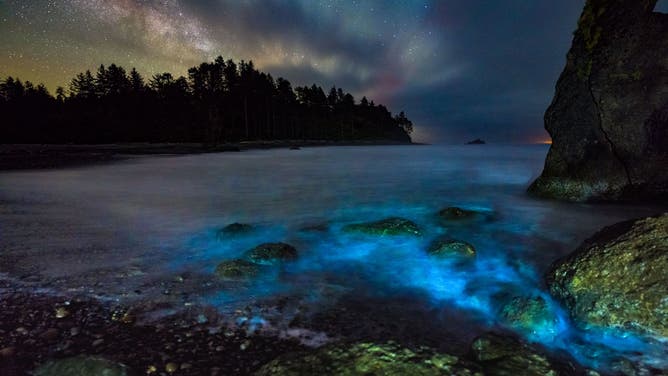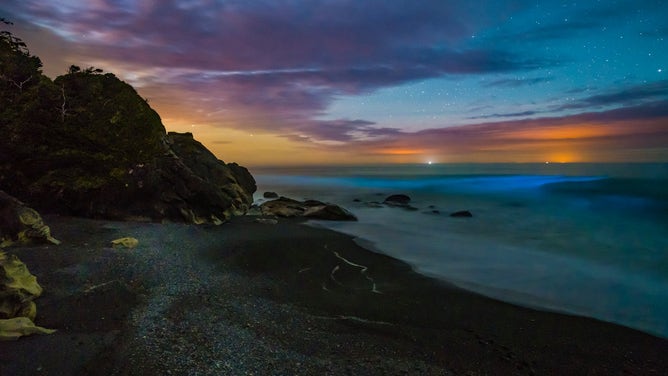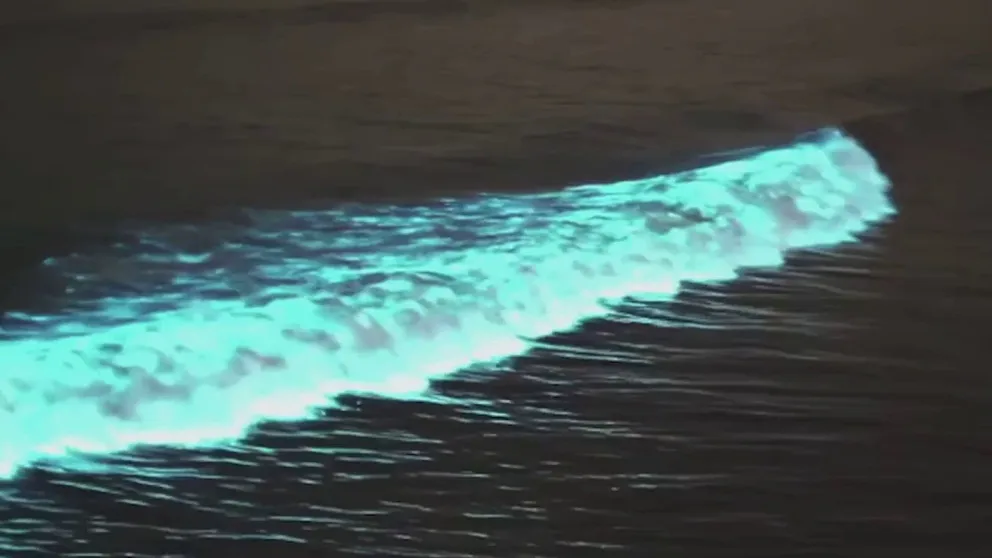Glowing review: Exploring the beauty of bioluminescence
The glowing waves are usually a fairly localized spectacle but can be seen on beaches around the world -- if you know where and when to look.
Exploring the beauty of bioluminescence
It looks like something out of a dream. Waves of blue light crashing ashore onto the California coast. The light is coming from inside the surf itself, courtesy of billions of microorganisms - a phenomenon known as bioluminescence.
It might look like something out of a dream -- dolphins gliding through waves of blue light; surfers slicing through neon swells and children splashing in flashing puddles along the shore.
The light is coming from inside the surf itself, courtesy of billions of microorganisms - A phenomenon known as bioluminescence.
"Bioluminescence is when living organisms produce light so they have the chemistry within their cells, their bodies to have a chemical reaction that involves release of energy comes out as light that we can see," said Michael Latz, a marine biologist at Scripps Institution of Oceanography through the University of California, San Diego.
The single-celled plankton, called dinoflagellates, release that energy when excited by wave action, or even a passing swimmer. But the light that’s just beautiful to our eyes, is much more meaningful to them.
"The purpose of the light can be for attracting prey or searching out prey like a flashlight or attracting mates or defending against predators," Latz said. "Bioluminescence or signaling by light is a really effective way of communicating, and of course, in shallow waters like along the coast, it's something that occurs at night."
This luminous display is actually a form of "red tide," a bloom of algae that in extreme cases, can foul coastlines and irritate your eyes and skin. Such blooms can be fueled by nutrient-rich runoff after a period of heavy rain. The glowing waves are usually a fairly localized spectacle but can be seen on beaches around the world.
Darkness... and patience
We can't predict when it will occur or how long it will last but there are some conditions that make sightings more likely.
Matt Nichols, who lives in Forks along the northern Washington coast, has made the trek to the Pacific Ocean beaches several times recently to capture the glowing display.

Bioluminescence photographed along the Washington coast in June, 2021. (Photo: Matt Nichols)
He said the best times to see the glow are after long, sunny days with calmer seas -- July and August are good bets along the northern Washington Coast -- and nights when the moon is either near its new phase or will be below the horizon for much of the night.
"To see it with your eyes requires very dark conditions," Nichols said. "This means any light pollution could make it impossible to see. Thus, the moon has to be almost completely out of the night sky in order to see the algae glow. Also, your eyes need to be adjusted to the darkness in order to see it."
He advises that any light from phone screens, flashlights, or nearby campfires will drastically decrease visibility. So prepare for a lot of standing in the dark, especially if you aim to capture the glow on camera.
"Photographing them takes a lot of patience," Nichols said. "Between fighting tides, guessing if conditions are right, spending all night out alone in the pure darkness, and at mercy of the weather, it takes perseverance, determination and a lot of preparation to get good pictures."

Bioluminescence photographed along the Washington coast in June, 2021.(Photo: Matt Nichols)
He suggested using a camera that allows you to adjust the exposure and ISO -- most newer models of smartphones will have this capability -- and using a tripod.
"The glowing waves happen sporadically, so it can be a real challenge to capture the glow in your frame," he said. "To do this, I am continuously clicking the shutter button, to be sure I don't miss a second of action."
Nichols said word of regular bioluminescence displays has been a shot in the arm for Forks, which gained fame as the setting for the popular Twilight series.
"It seems the bioluminescence will have lasting impacts on this small economy, bringing people from all over the world to witness the glowing blue waves coupled with an amazing environment," he said, adding those interested can follow along on his Bioluminescence group on Facebook.
But you don't have to just go to the Washington coast as there are several places in the world where the bioluminescence is consistent throughout the year.
In fact, there are several places in the Caribbean called bioluminescent bays where you can go kayaking at night and immerse yourself in the eerie blue glow. Just be sure to bring your camera, some patience, and your sense of wonder.
"(Seeing bioluminescence) turned out to be one of the most memorable nights of my life," Nichols said.
Oh, how the deep sea glows
A dreamy wonderland glows beneath the water's surface. In this video, marine biologist David Gruber explains how fish, reptiles and other animals exhibit bioluminescence and biofluorescence -- phenomena that help organisms display neon colors. (Footage courtesy of David Gruber and John Sparks)


